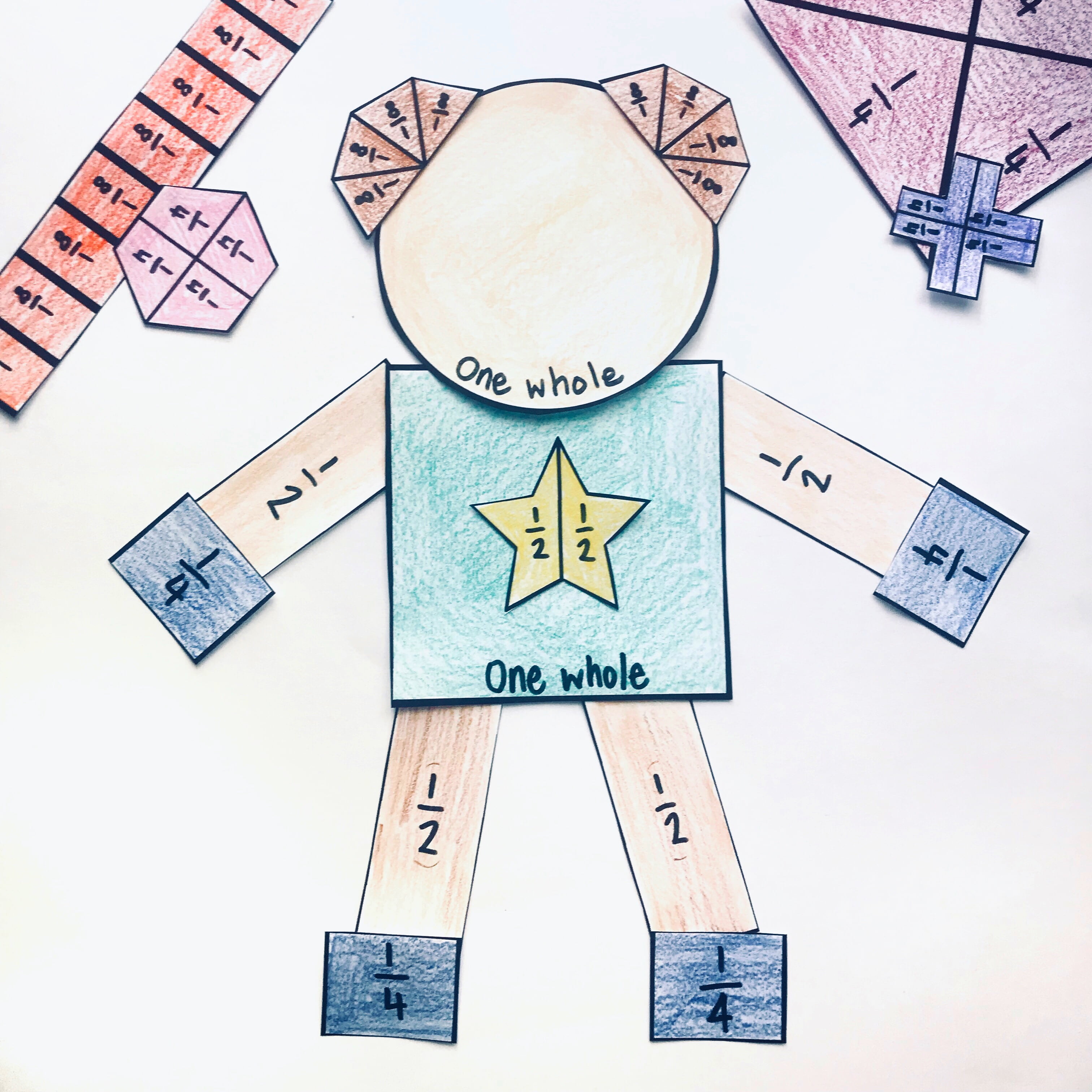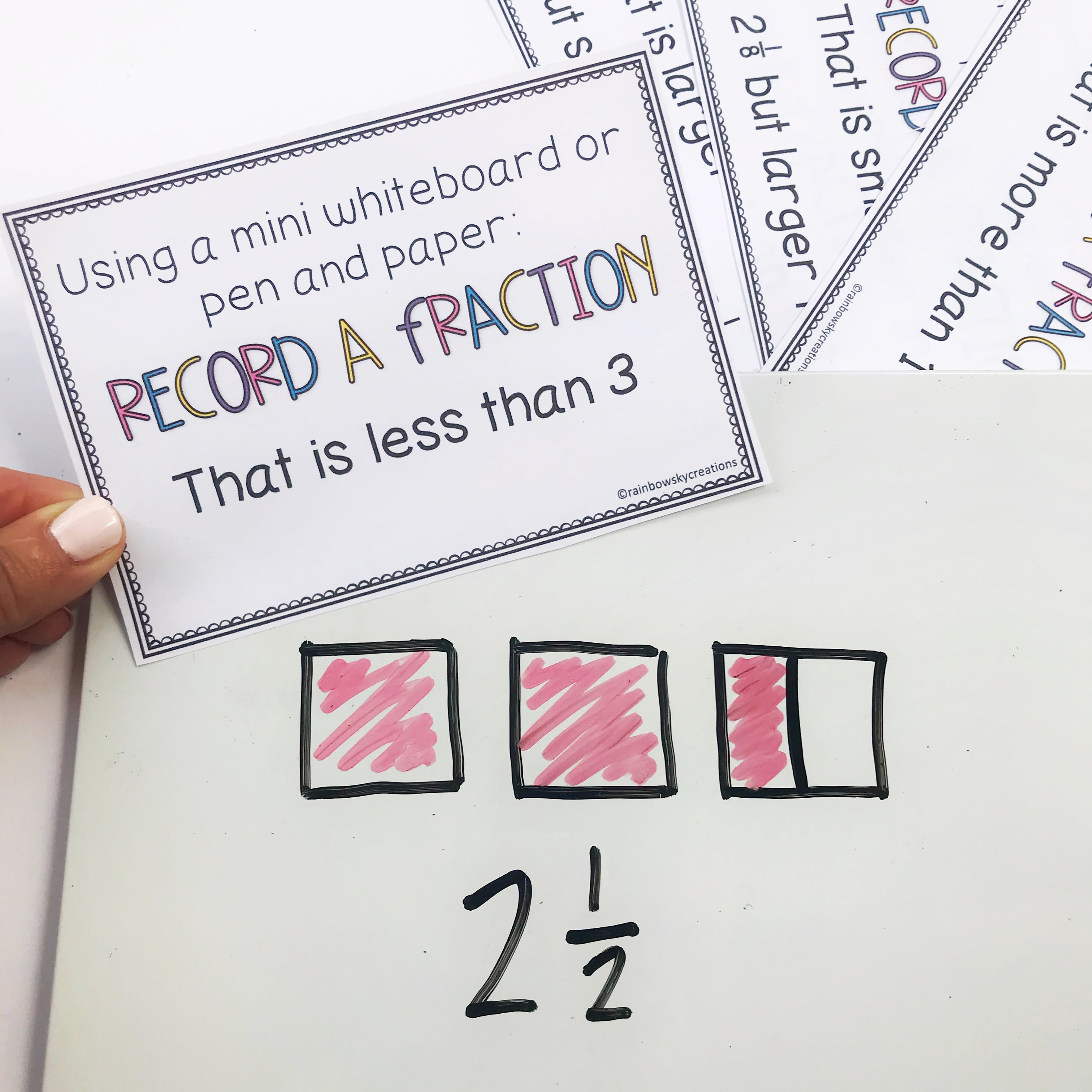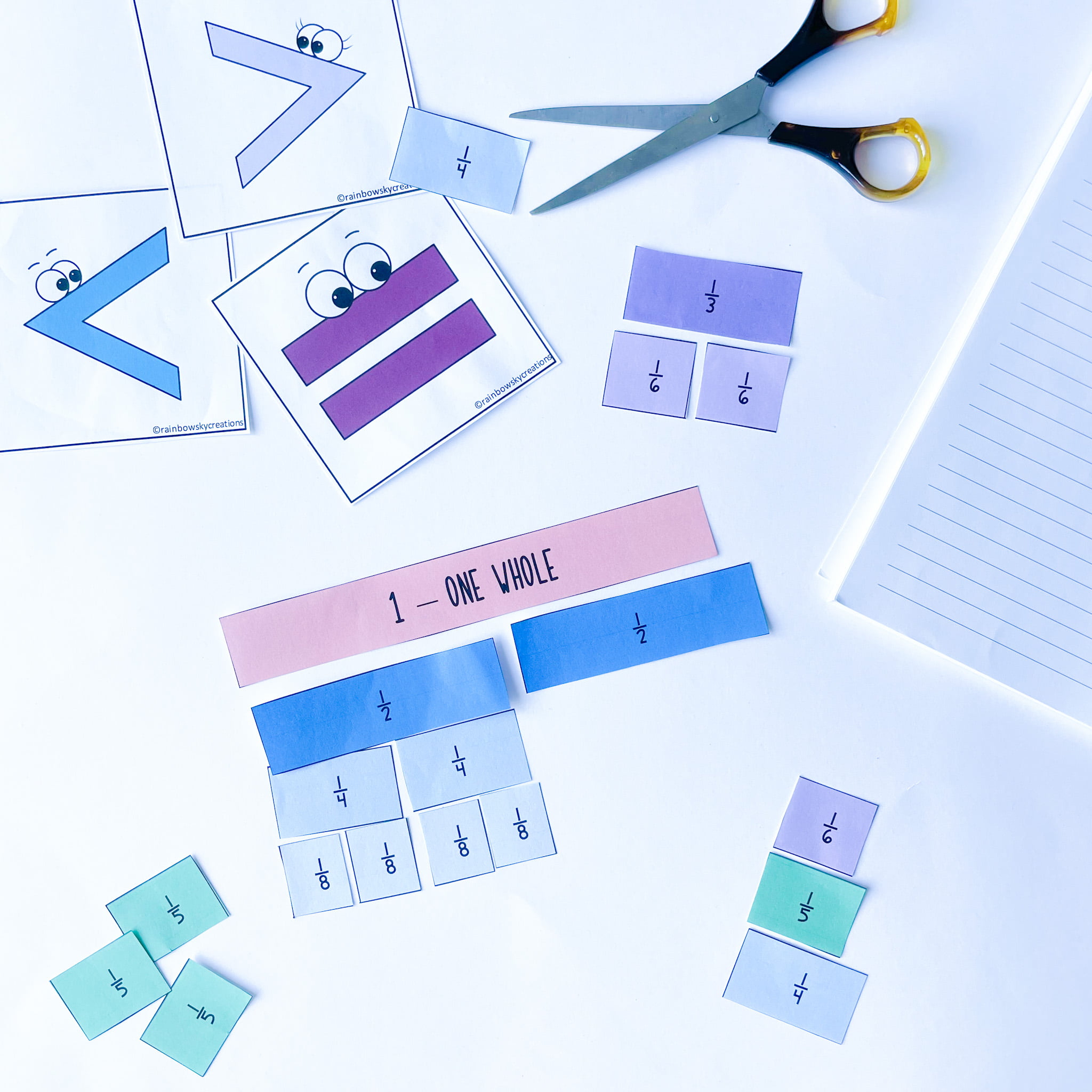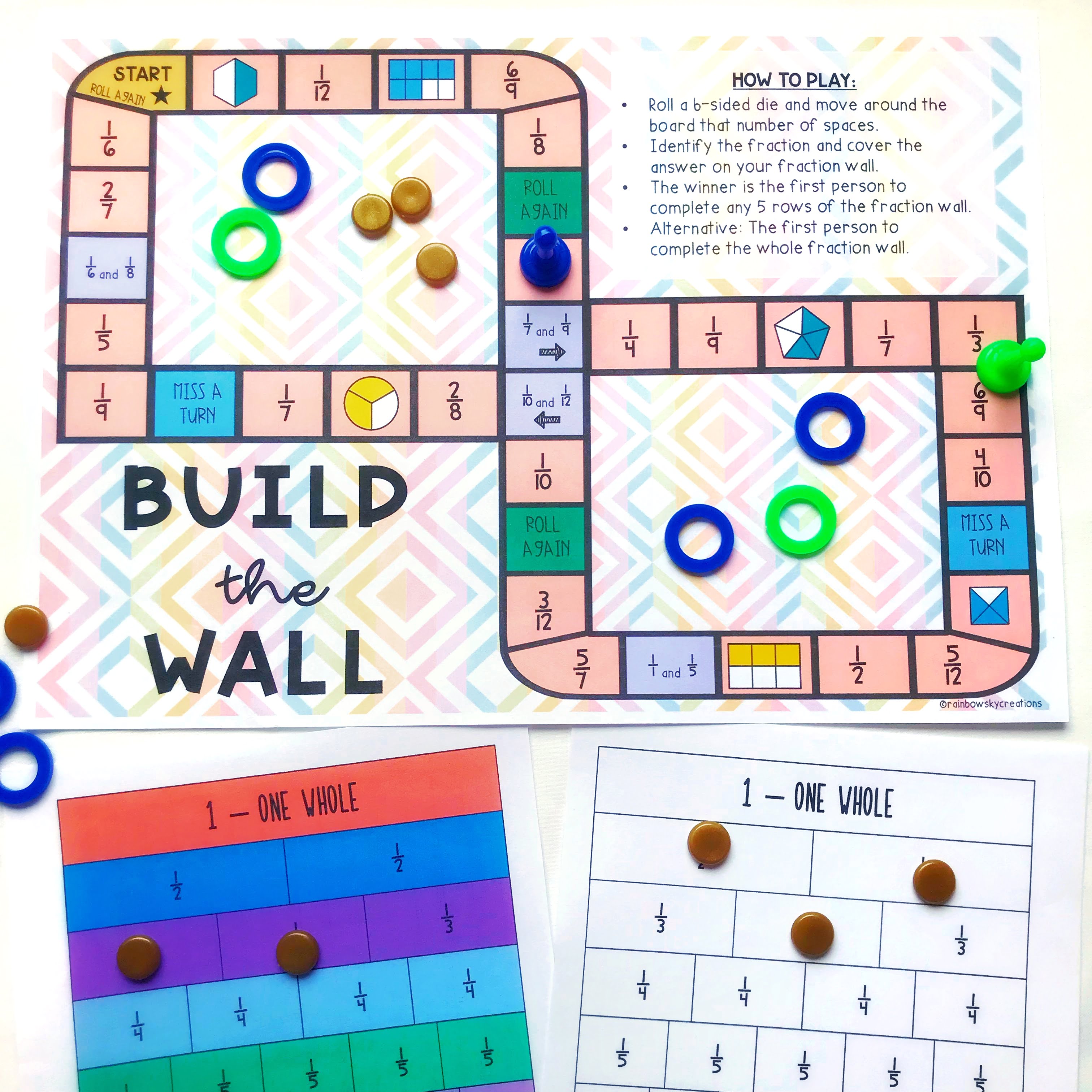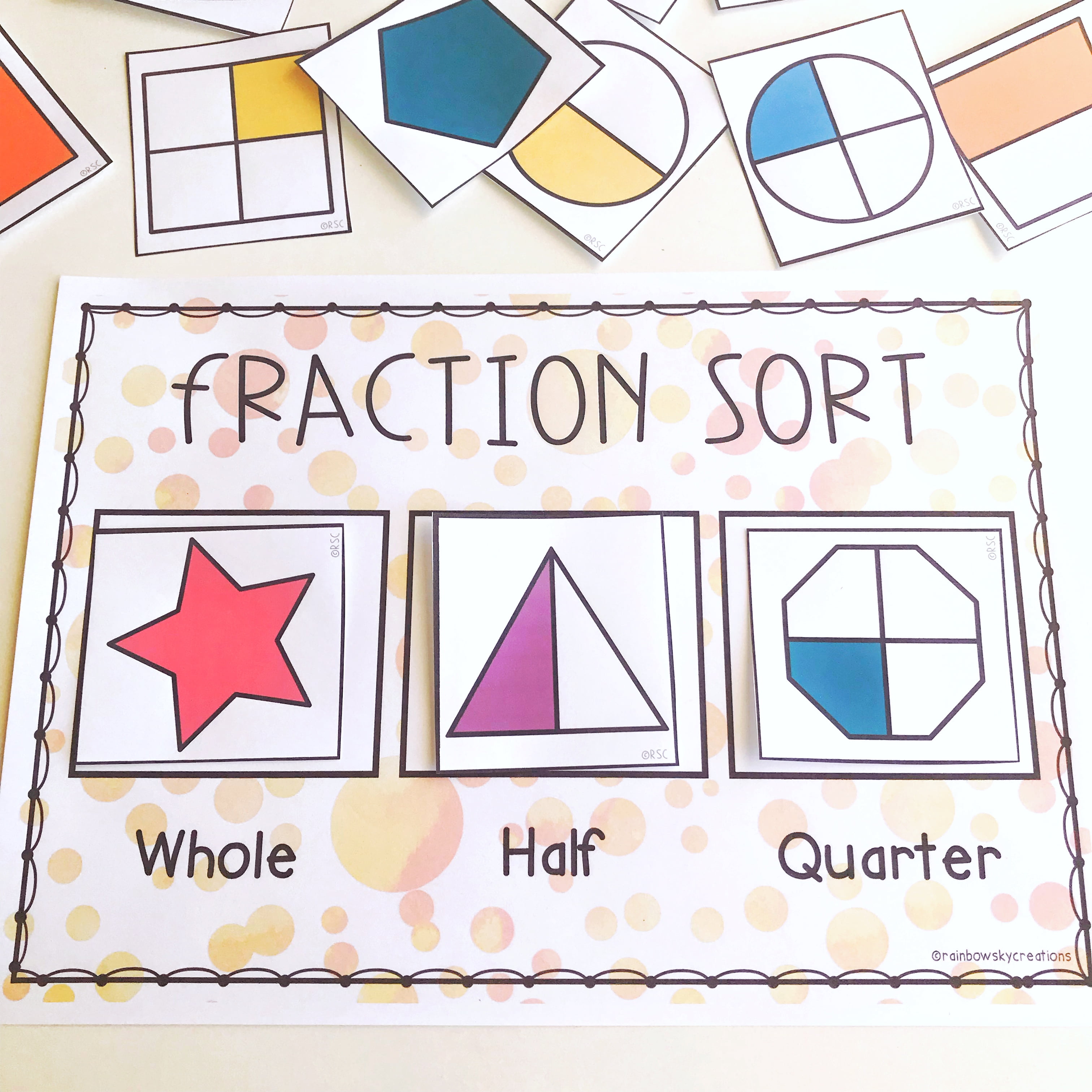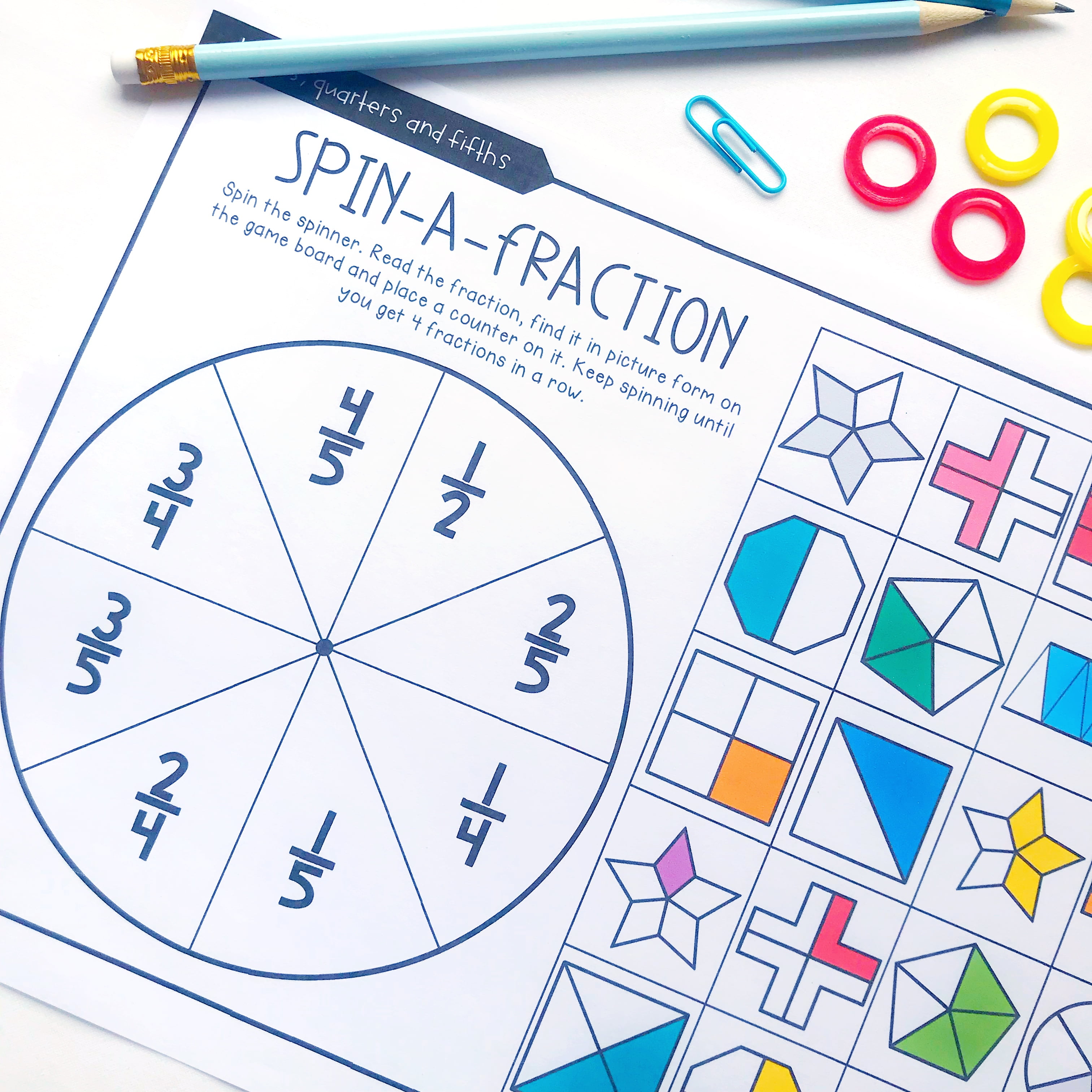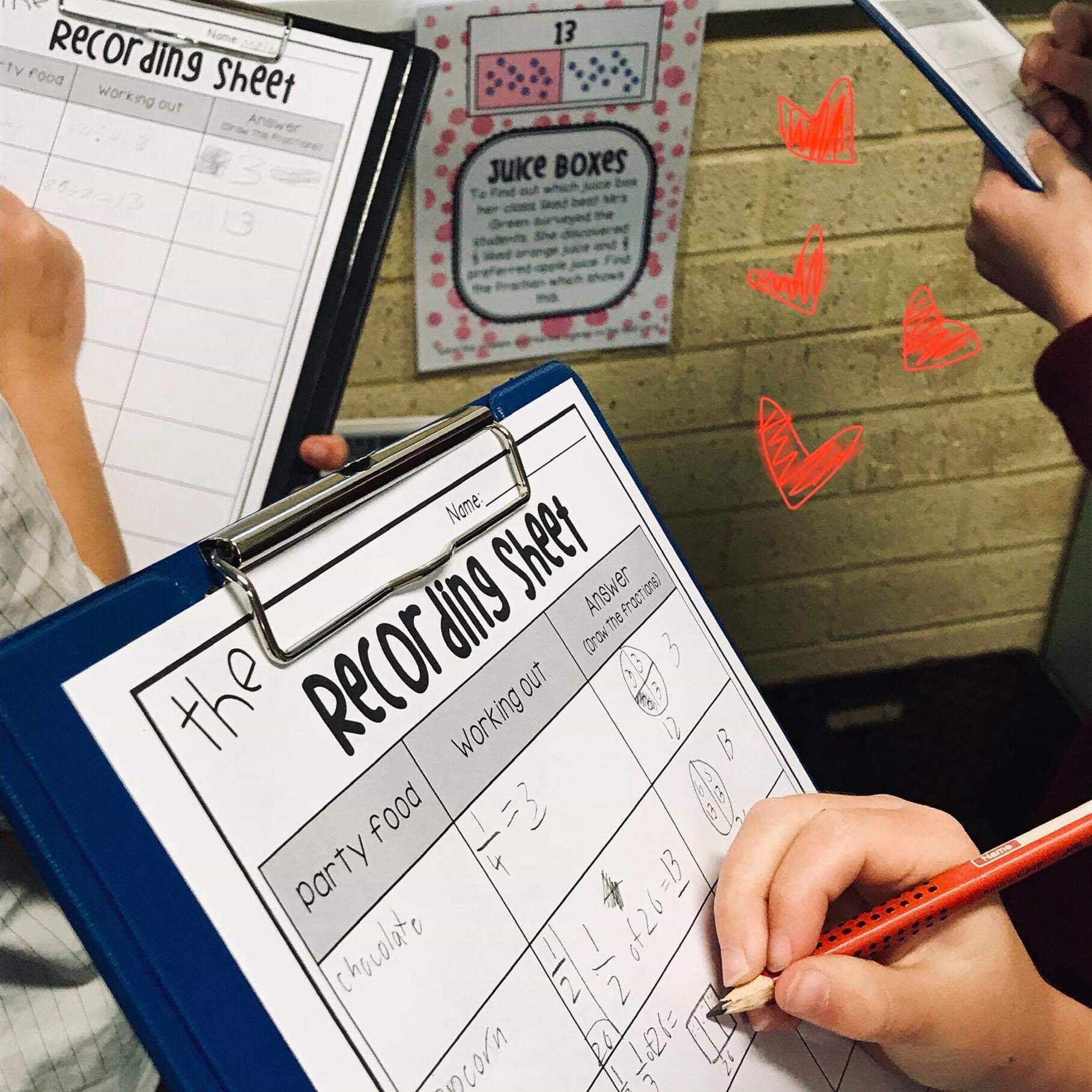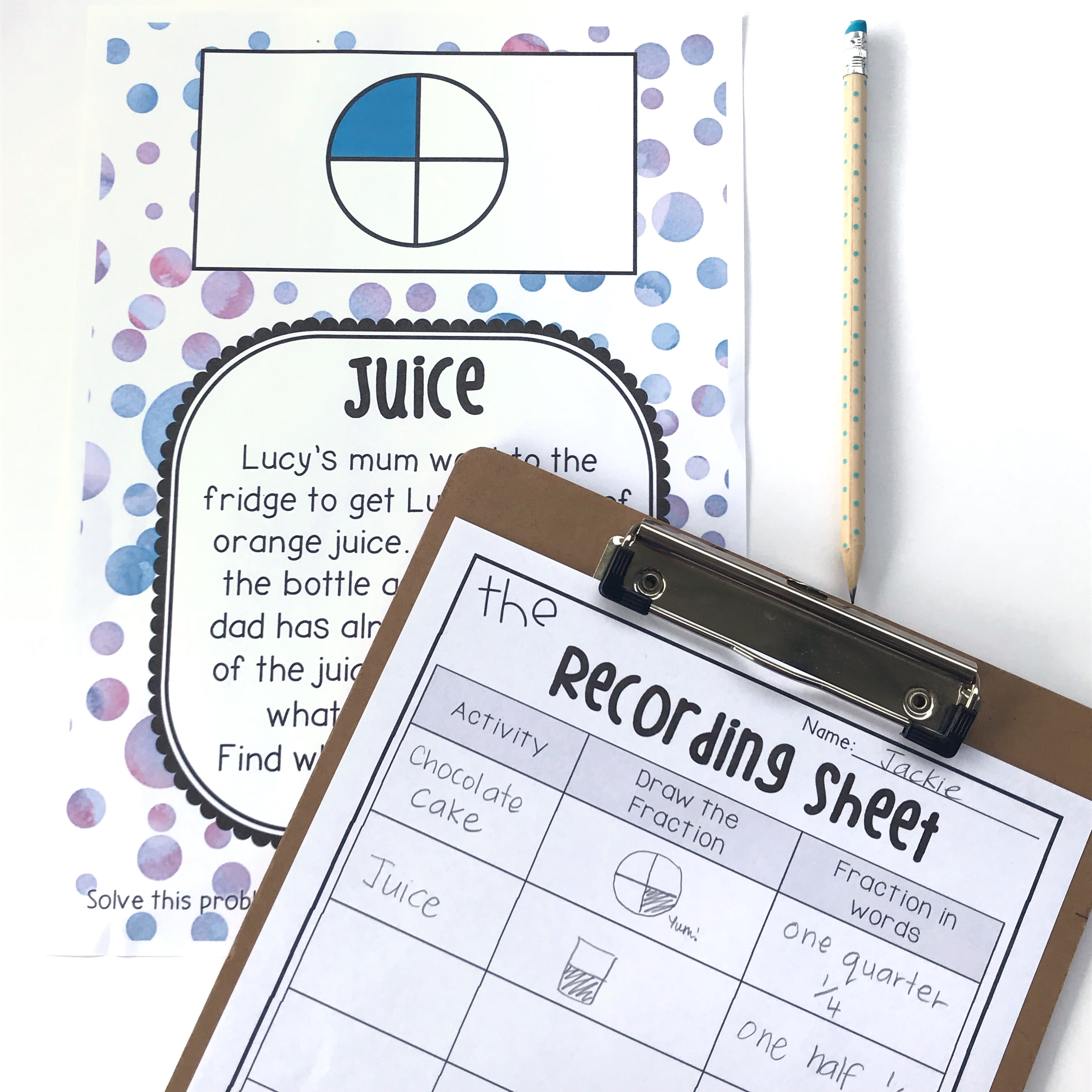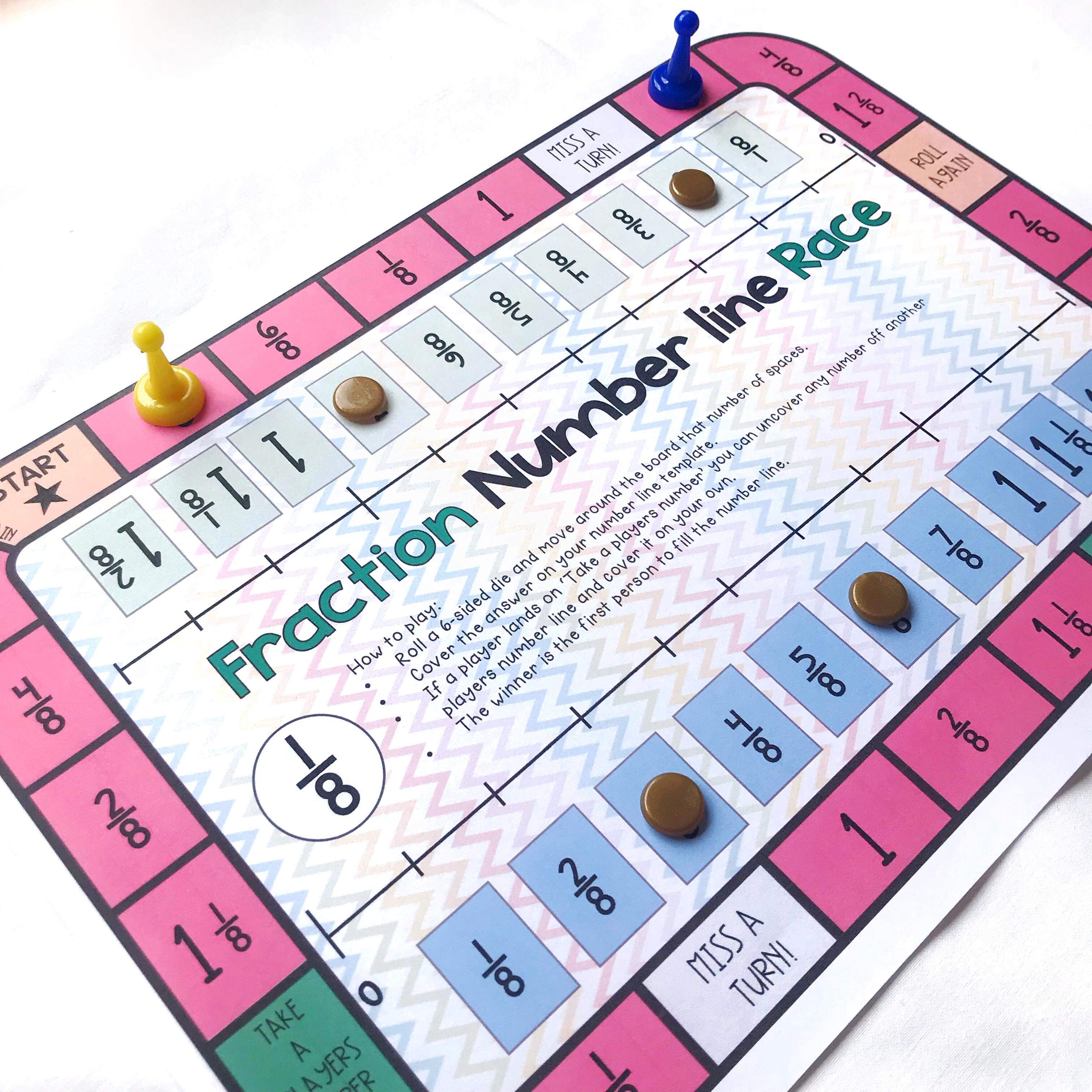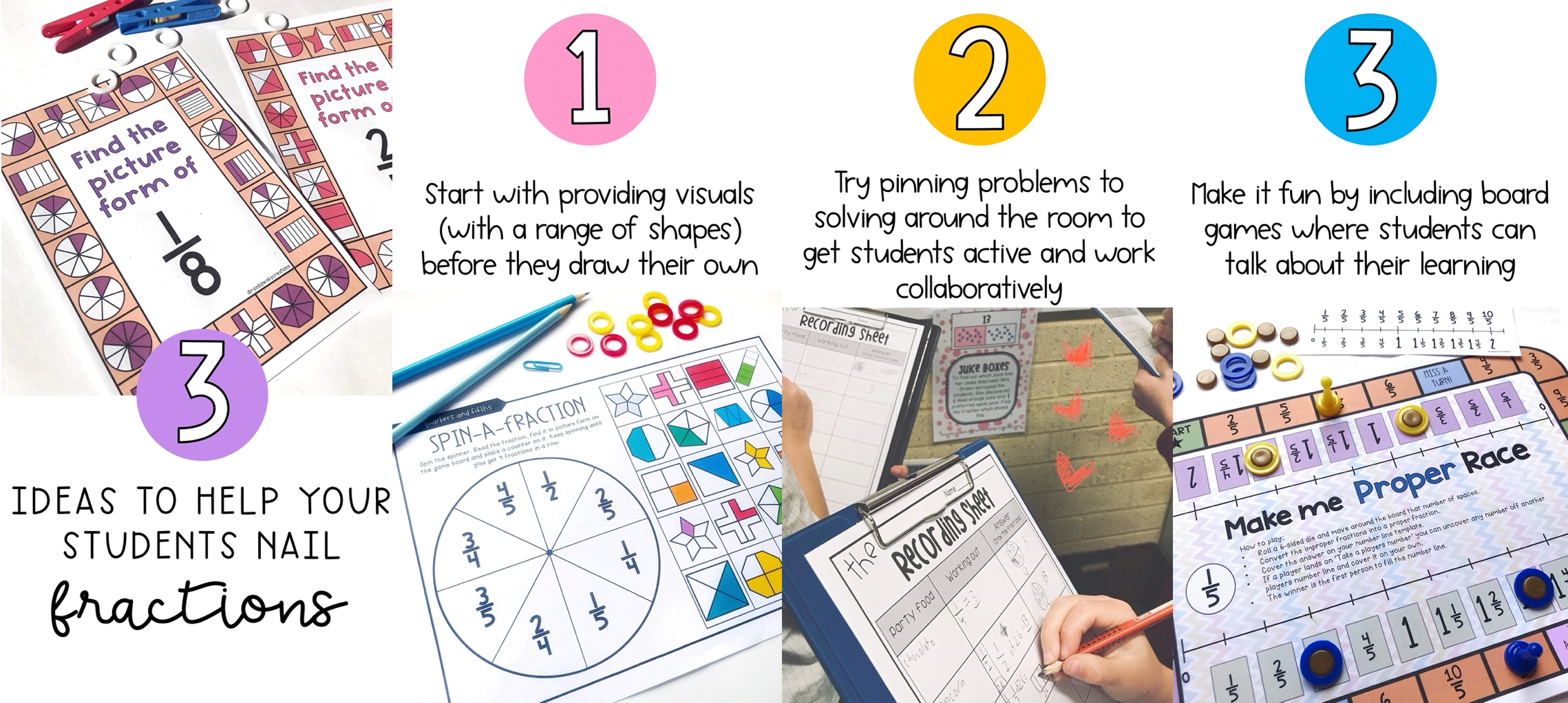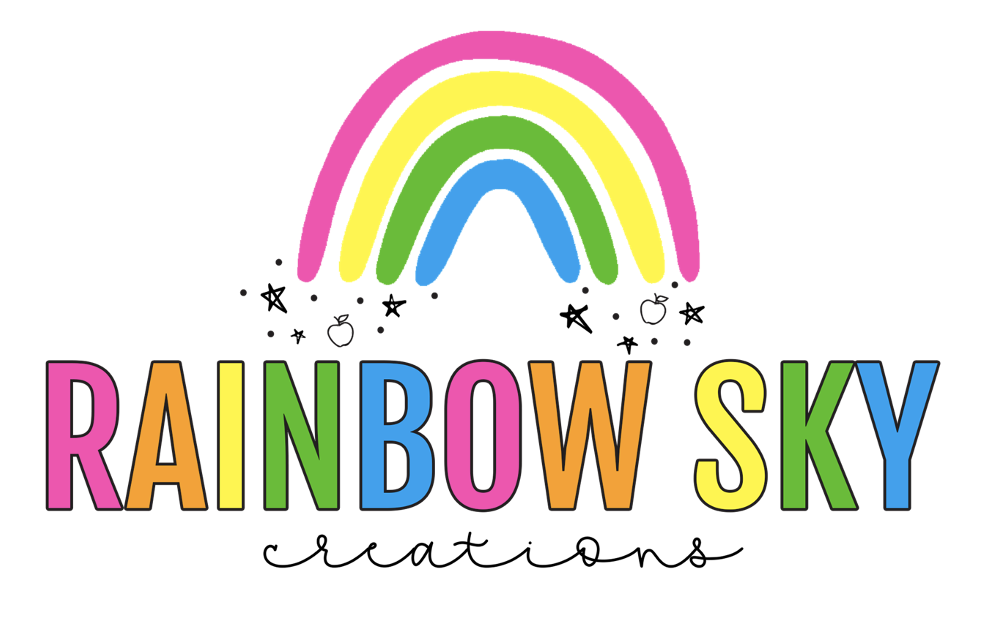Fractions are one of those topics… we often find ourselves giving students a range of shapes and asking them to divide into halves, quarters, eighths and so on. Sometimes reinventing the wheel needs to be done, and learning about fractions can be so much more engaging and hands-on.
Other maths skills we have written about before include Friends to ten, Times table fluency , Reading the time and Rounding.
We don’t know about you, but we find boring activities doesn’t make for the most amazing learning experiences. Don’t worry, you are in the right place.
Let’s talk about some simple ways you can spice up your fractions lessons so your students are highly engaged, having fun and learning in Maths!
These suggested activities are going to help you build your students proficiency, fluency, and confidence when it comes to fractions all while having fun in the process! Pick and choose what will work best for your students in their learning journey. All of these suggestions will work as a whole class tasks or in small guided or independent group activities.
Make a Fraction Wall
This one may seem obvious, teachers love a fraction wall. But we are going to challenge you to make a fraction wall and then dedicate a lesson for students to explore what they’ve created. What can they see, discover, learn about fractions from their wall? We highly recommend you give students a blank piece of paper to record their findings and allow lots of time during the lesson to share their discoveries.
Another way to implement a fraction wall is to begin with a few fractions at a time and then slowly add more as time goes on. This way, the resource can be used as just that, a resource, and it isn’t so overwhelming for students. Using combinations of equivalent fractions is a good starting point.
Finally, we love to use pieces of a fraction wall to order fractions according to size. Students often get confused about how big or small fractions are when comparing them and the pieces of a fraction wall are a great concrete resource for seeing and comparing.
Read and Sort
Fluency develops by doing a skill over and over. Give students a range of shapes that represent fractions (keep it to their level of learning). Ask them to sort them into categories.
You could have templates made up for them to make it a quick fluency station or you could turn this into an open-ended lesson and ask students to create categories to best sort their fractions.
Provide objects such as blocks and counters. Can they create fractions. If you have a dusty box of cuisenaire rods these are an excellent resource to use too.
Immerse in a range of visuals
One mistake we can make as teachers is presenting students with just one type of shape when teaching fractions (we often turn to rectangles or circles). But students need to see from the very beginning that all sorts of shapes can be divided equally and even though they look different, they still represent one half or a quarter etc.
We love using peg cards for younger students so they can explore different visual examples and make connections. For older students, you could use a similar activity but introduce equivalent fractions at the same time.
Make and match
Why not ask your students to make fractions using UNO or playing cards and then match or create a visual to represent it. This is a hands-on way to get students recording fractions in a variety of ways, without the need to complete a worksheet.
If you have older students who’ve already engaged with a fraction wall, consider adding in greater than, less than and equals to signs to allow opportunity to compare the fractions.
We love using UNO cards to teach a variety of maths concepts. Read more about it here.
Spinner games
Spinner games are awesome for proficiency and fluency alike. If students are not confident, ask them to work in pairs and help each other. Playing a spinner game is one way to get kids looking at lots of different fractions using a range of shapes disguise as a fun game.
Teacher Tip: We recommend you don’t laminate games like this; that way, when you are finished with them in class, you can send them home with students that still need additional support and practise.
Investigations
We love presenting problems as investigations in our classroom. It gets kids up and moving, plus we find they are more motivated and excited about the learning taking place.
Start by pinning problems around the classroom for students to move around and solve. It is another fun way to get them reasoning and using mathematical language when discussing solutions with each other.
These investigations are set up in a loop with the answer on the top of the following problem needed to be solved. This means students solve the problem and then go hunting for the answer. When they find the one card that matches the answer, they then solve the new problem underneath (if they cannot find the answer, this indicates to the student they have made a mistake).
Fraction board games
The trusty board game can be adapted for any skill, and fractions are no different. Board games are also one of our go-to activities to have for fast finishers. They provide a learning opportunity that is curriculum aligned, focused on what is being taught, as well as being an activity that kids really enjoy.

Tell us, which activity will you try first? Tag us on instagram once you give them a go, we love seeing teachers putting ideas into action and sharing them with our community.
If you love the thought of these games and activities but feel a little time poor (what teacher isn’t time poor?!) – then we have created print and go packs ready for you.
Click on your grade level below:
Grade 1
Grade 2 resource and Investigation
Grade 3-4 and Investigation
Find print and go Fraction exit slips here
Want to save these ideas for later? Pin this image:
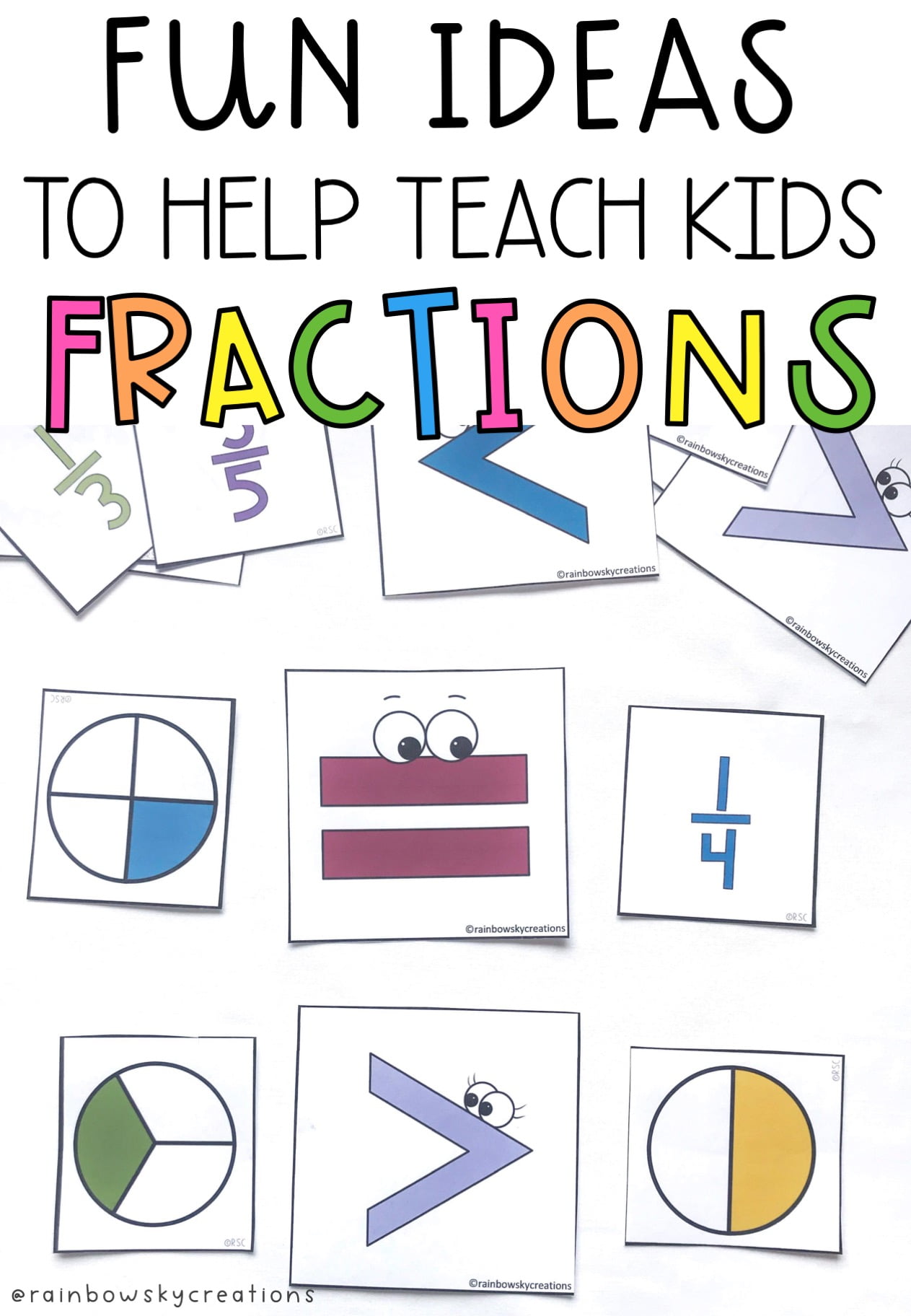
What to read next:
How to run your Maths Groups with SUCCESS
10 Reasons why we LOVE Maths Groups
8 creative ways to use Building Blocks in your Maths lessons
